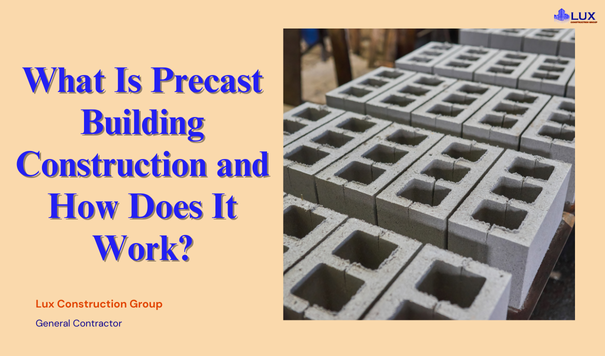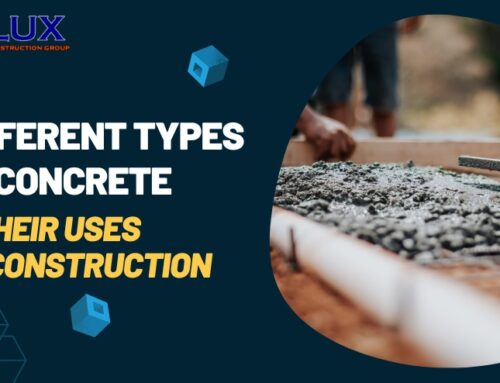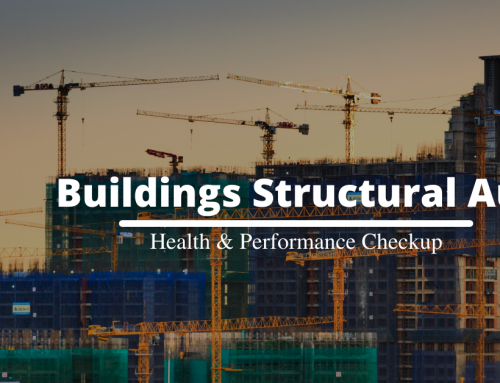As our communities grow, the demand for new housing and infrastructure rises steadily. However, traditional construction methods can be time-consuming and labor-intensive.
But, what if you could build your dream home or cutting-edge facility in a fraction of the time? This is what precasting does.
Precasting is a construction technique that involves manufacturing concrete components off-site in a controlled environment. And then, transporting and assembling them at the desired location. It’s like putting together a giant puzzle, but with the pieces being pre-fabricated concrete elements.
In this blog post, we’ll explore how it works, its benefits, and pros and cons.
Contents
- What is Precast Building Construction?
- Why Choose Precast Concrete?
- Types of Precast Concrete Used in Construction
- Precast Beams
- Precast Columns
- Precast Walls
- Precast Piles
- Precast Floor Slabs
- Precast Slabs and Planks
- Precast Staircase
- Precast Retaining Walls
- Pros and Cons of Precast Building Construction
- Precast Concrete Repair
- Patching
- Crack Repair
- Connection Repair
- Applications of Precast Building Construction
- Multi-Story Buildings
- Parking Structures
- Industrial Facilities
- Bridges and Infrastructure
- Retaining Walls
- Storm Shelters and Safe Rooms
- Modular Construction
- Get Professional Help!
What is Precast Building Construction?
Precast building construction is an innovative approach that involves the use of prefabricated concrete components. These components are created through a process known as precasting, where concrete is poured into reusable molds or forms and allowed to cure in a controlled environment. This process takes place in a factory setting, ensuring consistent quality and precision.
Once the concrete components have achieved the desired strength and durability, they are carefully transported to the construction site. There, these precast elements are meticulously assembled and integrated to form the final structure.
This method represents a departure from traditional construction techniques, where concrete is poured and cured on-site. Building modern structures with precast construction is more efficient and controlled due to the advantages of factory production and streamlined assembly.
Why Choose Precast Concrete?
Precast concrete is a compelling choice because of its ability to streamline construction timelines and minimize labor costs due to its off-site manufacturing process.
Moreover, precast concrete boasts exceptional durability, enabling it to withstand harsh environmental conditions and hefty loads, ensuring a long-lasting and resilient structure. Its versatility extends to design flexibility, with a vast array of shapes, sizes, and finishes available to cater to specific architectural and aesthetic requirements.
The sustainability credentials of precast concrete are also noteworthy. In addition to being made from recycled materials, it is fully recyclable at the end of its lifecycle.
Another reason for choosing precast concrete is that it is a cost-effective and efficient material solution that not only accelerates construction processes but also enhances durability, adaptability, and eco-friendliness. These attributes have solidified its position as a popular choice across a wide spectrum of construction undertakings.
Types of Precast Concrete Used in Construction
Precast building construction uses a variety of precast concrete elements, each serving a specific purpose in the overall structure. These components are manufactured off-site under controlled conditions and later assembled on-site.
Let’s explore some common types of precast concrete used in construction:
-
Precast Beams
These load-bearing structural elements are designed to span across open spaces and support the weight of floors, roofs, and other components above them. Precast beams come in various shapes and sizes, including rectangular, T-shaped, and I-shaped.
They are commonly used in the construction of buildings, bridges, parking garages, and other infrastructure projects.
The ability to manufacture precast beams off-site under controlled conditions ensures consistent quality and strength.
-
Precast Columns
Acting as vertical load-bearing members, precast columns play a crucial role in transferring loads from the upper levels to the foundation.
These sturdy components are often used in combination with precast beams to create a strong structural framework. Precast columns can be designed with various cross-sectional shapes, such as rectangular, circular, or square, depending on the specific project requirements.
Their off-site manufacturing process allows for precise reinforcement placement and concrete curing, resulting in superior strength and durability.
-
Precast Walls
Whether used for exterior façades or interior partition walls, precast wall panels offer exceptional versatility and durability.
These panels can be manufactured with various textures, colors, and finishes, providing architects and designers with a wide range of creative possibilities.
Precast wall panels are also highly resistant to weathering, fire, and impact, making them an ideal choice for both residential and commercial construction projects.
-
Precast Piles
In projects that require deep foundation systems, precast concrete piles are driven into the ground to provide a stable base for structures.
These piles can be either driven or bored into the soil, depending on the specific site conditions.
Precast piles are often used in the construction of bridges, high-rise buildings, and other structures that require significant load-bearing capacity.
-
Precast Floor Slabs
Also known as precast planks, these horizontal elements are used to construct floors in buildings, parking garages, and other structures.
Precast floor slabs are designed to span between supporting beams or walls, creating a sturdy and level surface for various purposes.
They can be manufactured with various reinforcement configurations and concrete strengths to meet specific project requirements.
-
Precast Slabs and Planks
Similar to floor slabs, precast slabs, and planks can also be used for constructing roofs, bridges, and other horizontal surfaces.
These components offer a cost-effective and efficient solution for spanning large areas while providing the necessary load-bearing capacity.
Precast slabs and planks can be designed with various surface finishes and textures to suit the desired aesthetic.
-
Precast Staircase
Offering both functionality and aesthetics, precast concrete staircases are a popular choice for buildings, providing safe and durable access between floors.
These precast components can be designed with various tread and riser configurations, as well as customized finishes and patterns.
Precast staircases are often preferred for their strength, durability, and ease of installation, reducing construction time and labor costs.
-
Precast Retaining Walls
Used to retain soil or water, precast retaining wall panels are a cost-effective and efficient solution for various civil engineering projects.
These panels are designed to withstand lateral pressures and can be manufactured with various textures, colors, and finishes to complement the surrounding environment.
Precast retaining walls are commonly used in landscaping, highway construction, and shoreline protection projects.
Pros and Cons of Precast Building Construction
There are a number of advantages and disadvantages to consider when considering precast building construction.
Let’s explore the pros and cons of this construction method:
Pros:
- Faster Construction Time: Precast components are manufactured off-site, while on-site activities focus solely on assembly. This parallel process significantly reduces overall construction time, allowing projects to be completed more efficiently.
- Quality Control: The controlled factory environment for manufacturing precast elements ensures consistent quality and adherence to specified standards, minimizing defects and increasing durability.
- Cost Savings: Precast construction reduces labor requirements and construction time, resulting in significant cost savings over traditional cast-in-place construction.
- Design Flexibility: Precast concrete components are available in various shapes, sizes, and finishes, allowing architects and engineers to explore creative design solutions.
- Sustainability: Precast concrete is made from recycled materials and can be recycled at the end of its lifespan, making it an environmentally friendly choice.
- Weather Independence: Off-site manufacturing of precast components eliminates weather-related delays and disruptions, ensuring a more predictable construction schedule.
Cons:
- Transportation Limitations: The size and weight of precast elements can pose challenges for transportation, especially in areas with limited access or narrow roads.
- Specialized Equipment: Handling and installing large precast components requires specialized equipment and trained personnel, which can increase initial costs.
- Limited Flexibility: Once precast components are manufactured, making on-site modifications or adjustments can be challenging and expensive.
- Potential Cracking: If not properly designed or installed, precast concrete can be susceptible to cracking or damage during transportation or assembly.
- Site Constraints: The need for adequate space to store and maneuver precast elements on-site may limit the use of this construction method in confined or congested areas.
- Aesthetic Limitations: While precast concrete offers design flexibility, achieving certain architectural details or finishes may be more challenging compared to cast-in-place methods.
When considering precast building construction, it is crucial to weigh these pros and cons.
It is important for stakeholders to carefully evaluate the advantages and potential problems associated with this construction method before making a final decision.
Precast Concrete Repair
Precast concrete components may sometimes require repairs on-site to meet the original material specifications.
The most common repair methods are:
-
Patching
Patching involves replacing damaged or deteriorated portions of the concrete with a cementitious material.
There are two types of patches: structural and cosmetic.
Structural patches are designed to transfer loads, while cosmetic patches are used to improve visual appearance.
-
Crack Repair
Not all cracks in precast concrete components need repair. A low-viscosity epoxy is an effective solution for repairing cracks.
This epoxy can be installed by allowing it to flow into the crack by gravity or by injecting it under pressure.
Before performing the repair, it’s essential to clean the cracks thoroughly.
-
Connection Repair
Connections between precast components may require repair if the components are misaligned or damaged, or if the embedment is missing.
Before selecting a repair method, structural calculations are necessary. Some available solutions include:
- Increasing the dimensions of the connection material
- Installing a new connection close to the original
- Adding stiffeners to the connection
It’s crucial to follow proper repair procedures and consult with experts to ensure the structural integrity and longevity of the precast concrete components.
Applications of Precast Building Construction
Precast building construction has found widespread applications across various sectors due to its efficiency and versatility.
Here are some common applications of this construction method:
-
Multi-Story Buildings
The use of precast concrete components, such as beams, columns, walls, and floor slabs, has become increasingly popular in the construction of multi-story residential and commercial buildings.
These precast elements offer a faster and more cost-effective approach to building high-rise structures while maintaining structural integrity and design flexibility.
-
Parking Structures
Precast concrete is an ideal choice for constructing parking garages and other parking structures.
The ability to create long spans with precast beams and slabs allows for efficient use of space. Whereas, precast walls and columns provide the necessary strength and durability to withstand heavy vehicular loads and environmental conditions.
-
Industrial Facilities
In the industrial sector, precast building construction is widely used for the construction of factories, warehouses, and other industrial facilities.
The strength and durability of precast concrete, combined with its ability to accommodate large open spaces, make it a suitable choice for these demanding applications.
-
Bridges and Infrastructure
Precast concrete components, such as beams, girders, and piles, play a crucial role in the construction of bridges, overpasses, and other infrastructure projects.
The off-site manufacturing of these elements ensures consistent quality and enables efficient assembly, minimizing disruptions to traffic flow.
-
Retaining Walls
Precast concrete retaining walls are commonly used in landscaping, highway construction, and shoreline protection projects.
These durable and cost-effective precast wall panels are designed to withstand lateral pressures. It can be manufactured with various textures and finishes to complement the surrounding environment.
-
Storm Shelters and Safe Rooms
In areas prone to severe weather events, such as tornadoes or hurricanes, precast concrete is an ideal material for constructing storm shelters and safe rooms.
The strength and impact resistance of these precast structures provide reliable protection against extreme wind and debris.
-
Modular Construction
Precast building construction has also found applications in modular construction, where entire building modules or units are manufactured off-site and then transported to the construction site for assembly.
This approach can further enhance construction speed, reduce waste, and improve quality control.
Get Professional Help!
Precast building construction offers a faster, more efficient, and cost-effective way to construct a wide variety of buildings. From its controlled manufacturing environment to its reduced construction site time, the precast building offers numerous advantages.
If you’re looking for a reliable construction company experienced in precast building techniques, look no further than LUX Construction Group. Our team of experts can handle all aspects of your project, from design and engineering to construction and completion. We offer reliable precast building solutions that are tailored to meet your specific project requirements within budget and on schedule.
Contact LUX Construction Group today to discuss your next building project and see how precast construction can benefit you.



